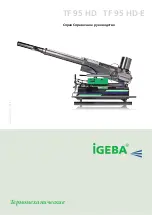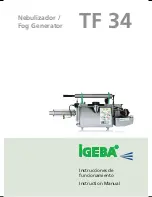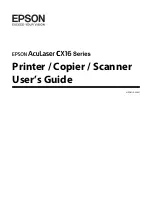Reviews:
No comments
Related manuals for EMT 1

TF 95 HD
Brand: IGEBA Pages: 59

TF 34
Brand: IGEBA Pages: 48

ENTERPRISE TC4
Brand: Smoke Factory Pages: 16

eXplore 160
Brand: ELNA Pages: 76

T-Fax 8500
Brand: T-COM Pages: 6

Akiles WBM-532
Brand: MyBinding Pages: 3

QK32
Brand: Windsor Pages: 30

8500 Els
Brand: Gamma Pages: 23

K 70/30 Bp Pack Adv.
Brand: Kärcher Pages: 28

DDL-5550-7
Brand: JUKI Pages: 12

Endurance BND9
Brand: Baby Lock Pages: 40

HZL-E71
Brand: JUKI Pages: 72

Aculaser CX16NF
Brand: Epson Pages: 213

FA-V71A
Brand: Brother Pages: 16

FA-V81A
Brand: Brother Pages: 60

EXEDRA E-40
Brand: Brother Pages: 19

Entrepreneur Pro PR1050X
Brand: Brother Pages: 12

Entrepreneur W PR680W
Brand: Brother Pages: 10

















